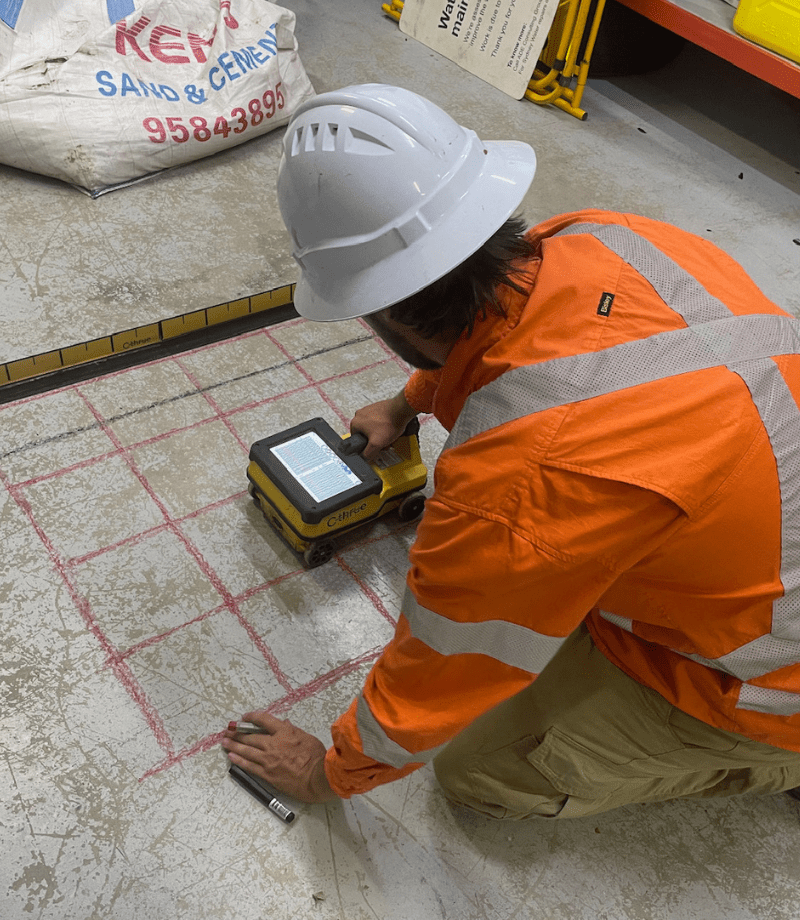The Significance of Precise Concrete Scanning in Detecting Underground Hazards
The capacity to properly spot and map these underground risks is not just a matter of convenience but a vital aspect of guaranteeing the safety of both building employees and the integrity of the project itself. By releasing sophisticated scanning technologies and methodologies, specialists can reveal surprise threats, avoid pricey problems, and ultimately pave the means for smoother and safer construction undertakings.
Advanced Scanning Technologies for Detection
Sophisticated radar systems are transforming the field of below ground detection by giving unmatched precision and effectiveness. These advanced scanning technologies use ground-penetrating radar (GPR) to develop thorough pictures of subsurface structures, providing insights right into what lies underneath the surface area with remarkable quality. By producing high-frequency pulses right into the ground and gauging the representations, radar systems can identify variants in material make-up and discover below ground risks such as spaces, wires, and pipelines.
Among the crucial benefits of these innovative radar systems is their non-invasive nature, permitting comprehensive evaluations without triggering damage to the existing frameworks. This not just ensures the safety and security of the surrounding setting yet also minimizes the need for costly fixings or interruptions to continuous building jobs. Furthermore, the real-time data supplied by these scanning innovations allows fast decision-making and improves overall job efficiency.
Importance of Subsurface Mapping

Exact subsurface mapping assists in stopping expensive problems to existing below ground framework, decreasing the danger of mishaps, and maintaining project timelines. It enables job managers to make educated decisions concerning site planning, devices release, and source appropriation. Additionally, subsurface mapping allows for better coordination amongst various teams working with a job and helps in abiding by governing needs connected to below ground energy discovery.
Mitigating Dangers in Building And Construction Tasks
Reliable danger reduction techniques are essential for making sure the success and safety and security of building tasks. Determining and resolving prospective risks prior to they rise is vital in preserving project timelines, spending plans, and general high quality. One key facet of mitigating risks in building and construction projects is thorough preparation and evaluation at the first stages. Carrying out extensive website surveys, consisting of exact concrete scanning for underground risks, can help in determining potential concerns at an early stage. Making use of advanced innovations like ground-penetrating radar and electromagnetic induction can help in detecting utilities, rebar, or various other obstructions that might position threats during building.
In addition, establishing clear communication networks amongst all job stakeholders and making certain stringent adherence to safety protocols are essential parts of danger reduction. By proactively applying durable risk mitigation techniques, building and construction jobs can lessen hold-ups, expense overruns, and security incidents, eventually leading to successful task results.

Preventing Expensive Problems and Delays
To minimize financial losses and project setbacks, reliable approaches must be carried out to avoid costly damages and hold-ups in construction jobs. Determining these obstructions early on aids in intending the job design a lot from this source more successfully and staying clear of prospective damages during excavation.
Additionally, spending in training programs for building and construction workers on the significance of concrete scanning and secure excavation methods can substantially reduce the risk of delays and crashes. Clear interaction channels in between task managers, designers, and on-site workers are additionally vital to ensure that everyone is mindful of the prospective hazards and adheres to the needed protocols to stop expensive damages. By focusing on proactive procedures like concrete scanning and promoting a society of security and awareness, building tasks can decrease the financial impact of unanticipated underground blockages and avoid costly hold-ups.
Ensuring Safety of On-Site Employee
By focusing on proactive procedures such as detailed training programs and clear interaction channels, construction tasks can guarantee the safety and security of on-site personnel amid the prospective threats identified with concrete scanning. Correct training equips workers with the expertise and skills needed to browse construction sites safely, specifically when threats are identified with scanning processes. Training must cover threat recognition, emergency situation treatments, and the proper usage of personal protective devices to alleviate threats properly.
Additionally, establishing clear communication channels is essential for distributing details about identified hazards quickly. This guarantees that all on-site workers understand prospective risks and can take needed safety measures to prevent mishaps. Routine safety briefings, tool kit talks, and constant updates relating to scanning results assistance keep everyone informed and proactive in keeping a secure workplace.
Additionally, executing strict adherence to safety and security protocols and policies, conducting normal security audits, and promoting a culture of safety and security awareness among workers are essential elements in guaranteeing the well-being you could try here of on-site employees throughout building jobs - RainierGPR Concrete Scanning. Proactive precaution not just protect workers from harm however also add to the general success and performance of the task
Verdict
Making use of advanced scanning technologies and subsurface mapping helps minimize risks in building tasks, preventing costly damages and hold-ups. It is crucial for building and construction companies to prioritize the use of exact scanning approaches to reduce possible hazards and guarantee a smooth building procedure.

By proactively executing robust risk mitigation strategies, construction tasks can reduce delays, cost overruns, and safety cases, inevitably leading to effective task end results. - RainierGPR Concrete Scanning
To reduce financial losses and project troubles, reliable approaches need to be applied to avoid costly problems and hold-ups in building projects. By focusing on aggressive procedures like concrete scanning and advertising a culture of safety and security and understanding, building projects can decrease the monetary impact of unexpected underground blockages and prevent costly hold-ups.
By focusing on proactive procedures such as thorough training programs and clear communication networks, building projects can make certain the security of on-site personnel in the middle of the potential risks spotted via concrete scanning. Using innovative scanning innovations and subsurface mapping helps mitigate dangers in construction useful site tasks, avoiding pricey damages and hold-ups.